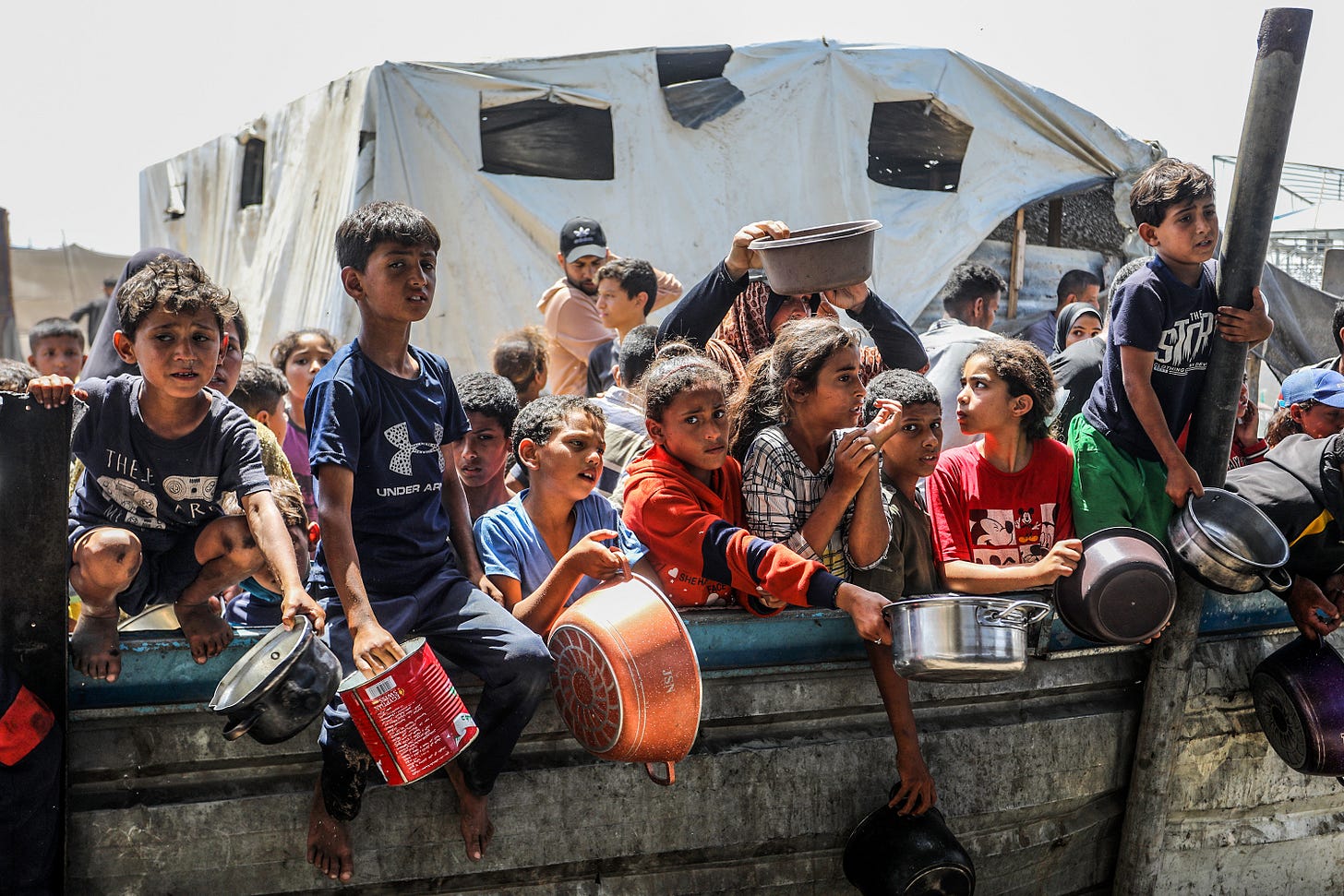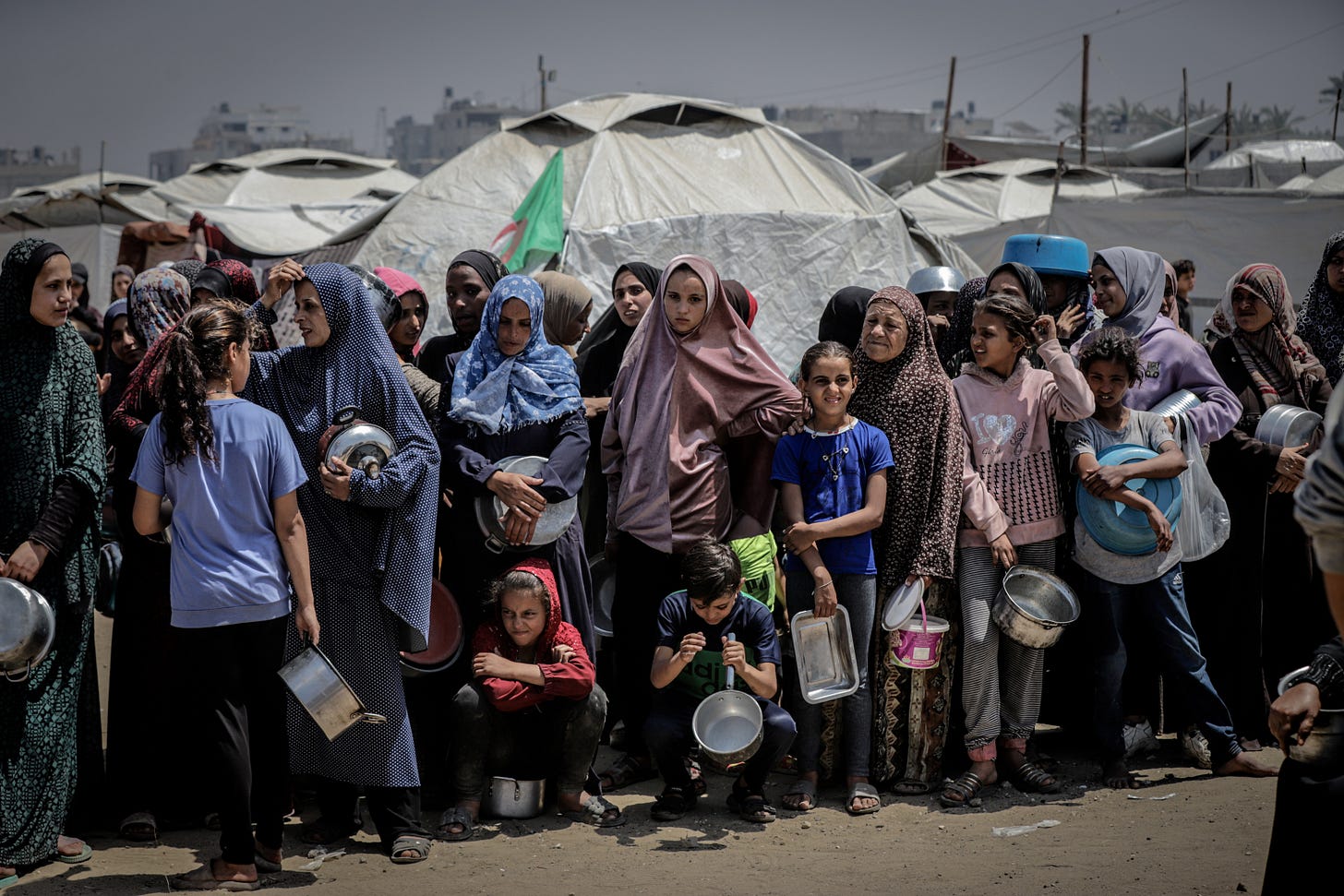Trump's Extremely Dangerous and Dystopian Gaza Aid Plan
The plan, rejected by the UN and other aid groups, is nothing more than a 'sinister' mechanism of control masquerading as aid.

As starvation in Gaza reaches new catastrophic levels after Israel banned all food and aid from the enclave for now more than 70 days, US Ambassador to Israel Mike Huckabee proudly announced on Friday an imminent breakthrough: Israel and the US are finalizing a new mechanism to resume food supplies to the enclave. “President Trump has made clear that one of the most urgent things that need to happen is humanitarian aid into Gaza,” Huckabee emphasized.
But Huckabee’s announcement, apparently designed to sound benevolent, has evoked wide and fierce international backlash as well as significant opposition inside Gaza.
That’s because we now know that mechanism will be run by a new private foundation, effectively ending the UN-led aid system that has long been in place in Gaza and replacing it with a tightly controlled process designed to only give much-needed assistance to around 60% of the enclave’s population.
“The UN altogether, from the secretary general to the different agencies, including UNRWA, rejects the plan,” UNRWA’s director of external relations and communications Tamara Alrifai told me. A senior European official described it as “dystopian” and “sinister,” while another called it “extremely dangerous.”
A private memo drafted by UN agencies and more than 20 international nongovernmental organizations (INGOs) that I viewed sounded a serious alarm and demanded that states not fund or engage with this mechanism, warning that doing so could amount to “aiding and assisting internationally wrongful acts, and expose states and donors to legal and political accountability.” A human rights researcher and breastfeeding mother in Gaza told me, “One has to be completely insane” to go to those compounds, even though she herself suffers from acute malnourishment and has been passing out lately. “We don’t want aid, we want the killing to stop first,” she added.
Underscoring these concerns is the fact that “Israel was very quick to embrace the plan,” which “also begs further questions,” H.A. Hellyer, a scholar at the Royal United Services Institute in London, told me. Even extreme-right Minister Bezalel Smotrich, who previously said it may be “just and moral” to starve Gaza, voted in favor of the plan.
Recycling Rejected Ideas
Under the American-Israeli plan, aid would be managed and distributed solely through an unknown and newly created private organization called “The Gaza Humanitarian Foundation” (GHF), which was recently registered in Switzerland. A senior Swiss diplomat told me that GHF was registered by an Armenian businessman and two Americans. The entire structure of the organization does not appear to include any Palestinians or Arabs and does not involve any of the organizations already working in Gaza with ample experience and long track records, prompting Hellyer to call it “a very shady setup.”
GHF would open only four “Secure Distribution Sites” in southern Gaza, replacing the more than 400 UN aid distribution points already in the Strip. Each GHF “hub” would provide food, water, hygienic kits, and medicines “based solely on need” to 300,000 Palestinians in Gaza (1.2 million in total), which means only a little over a half of Gaza’s population would benefit from this mechanism, while the fate of the rest remains unknown as Israel would allow aid through GHF only.
The distribution sites would be run by armed American “mercenaries who previously served in this mission in Iraq and Afghanistan,” according to Israeli media. They would be “monitored and guarded by Israeli forces or private military-security companies,” according to the private memo.

Beneficiaries of aid would be called up individually to approach GHF’s armored hubs to receive one package of 50 meals for an entire family, each containing 1,750 calories. Each meal would cost $1.30 – an amount that GHF claims would include all the components of transportation, security, and distribution.
This mechanism prompted the UN and international NGOs working in Gaza to link it to earlier Israeli ideas like the security “bubbles,” (AKA humanitarian “islands,” and “gated communities”), which were premised on weaponizing aid against Gaza’s civilian population to achieve military and political goals.




